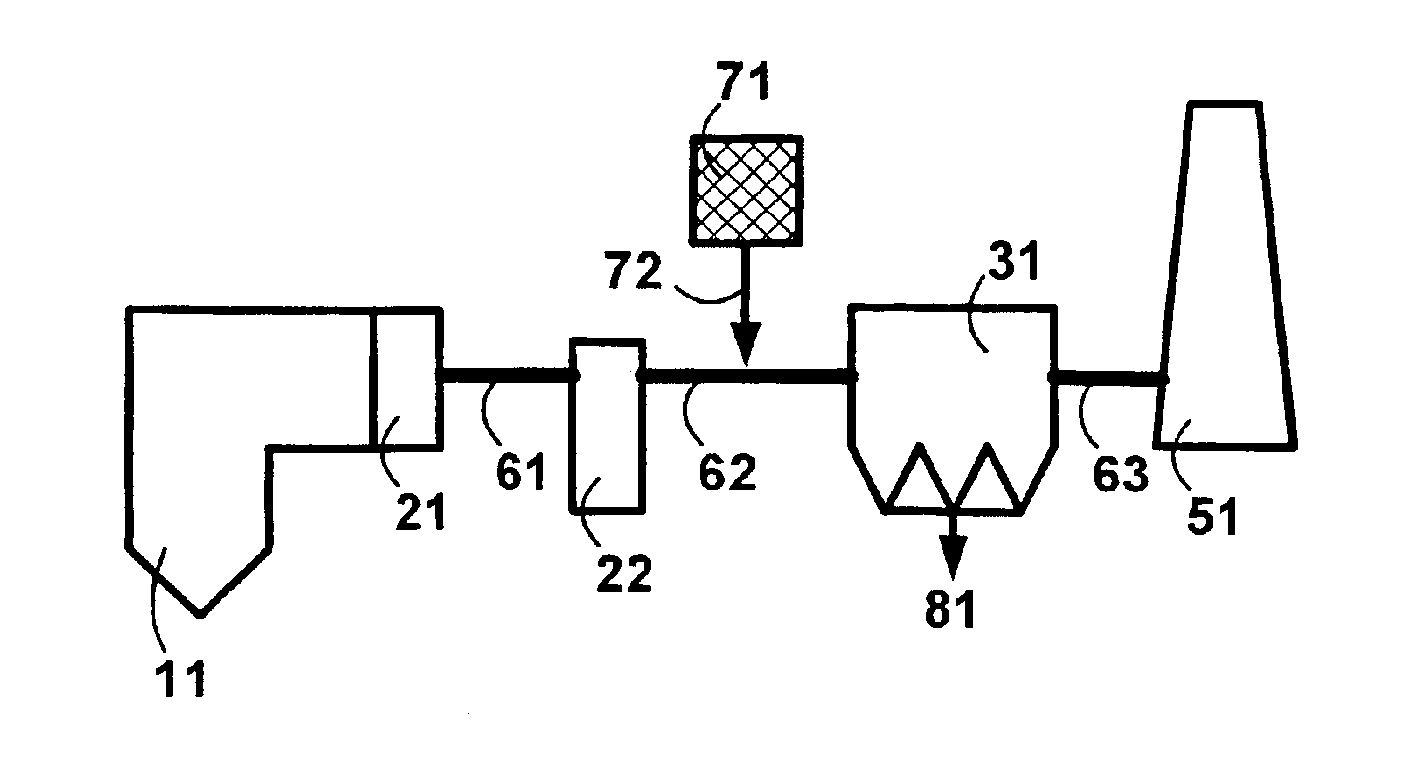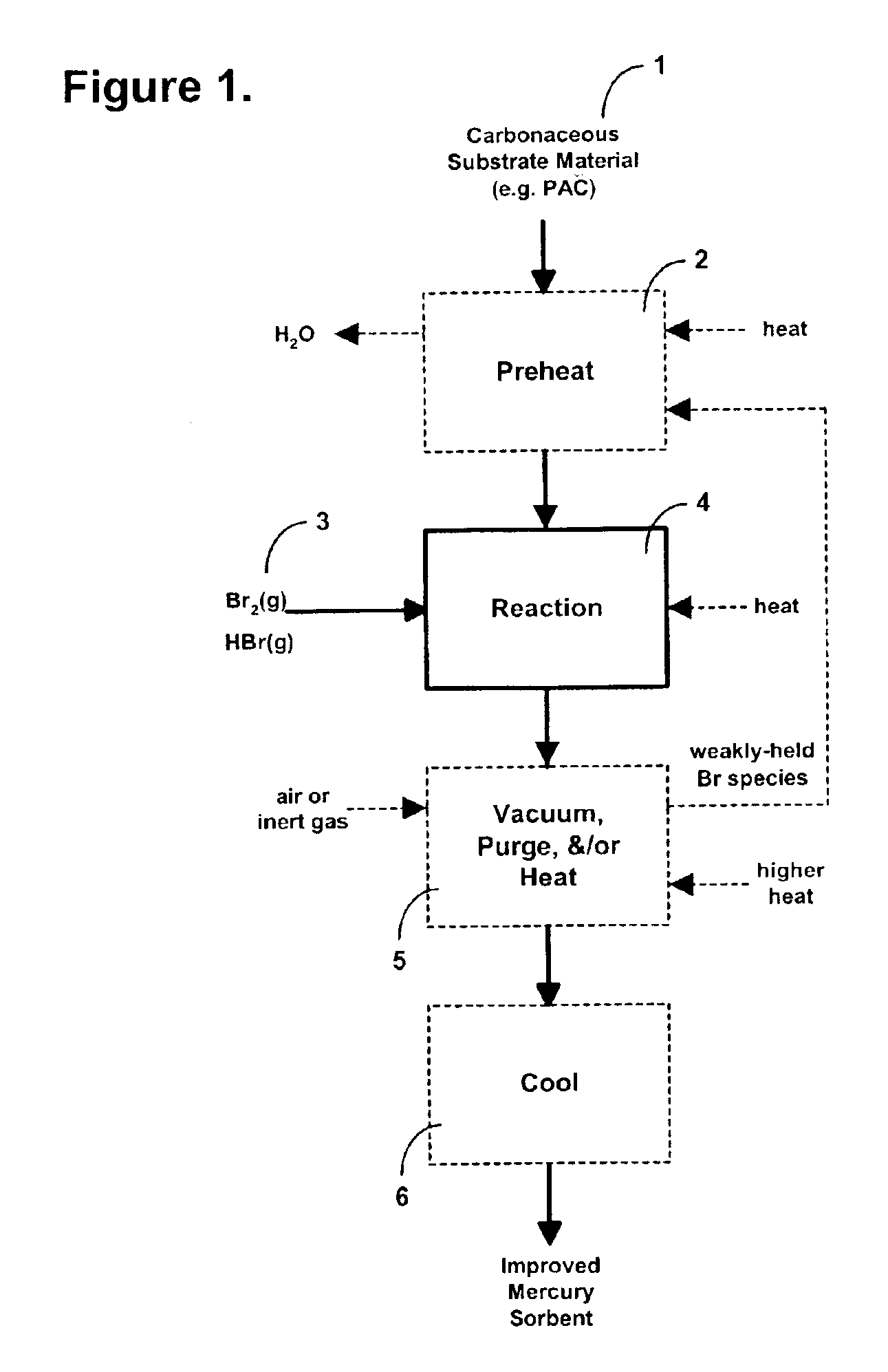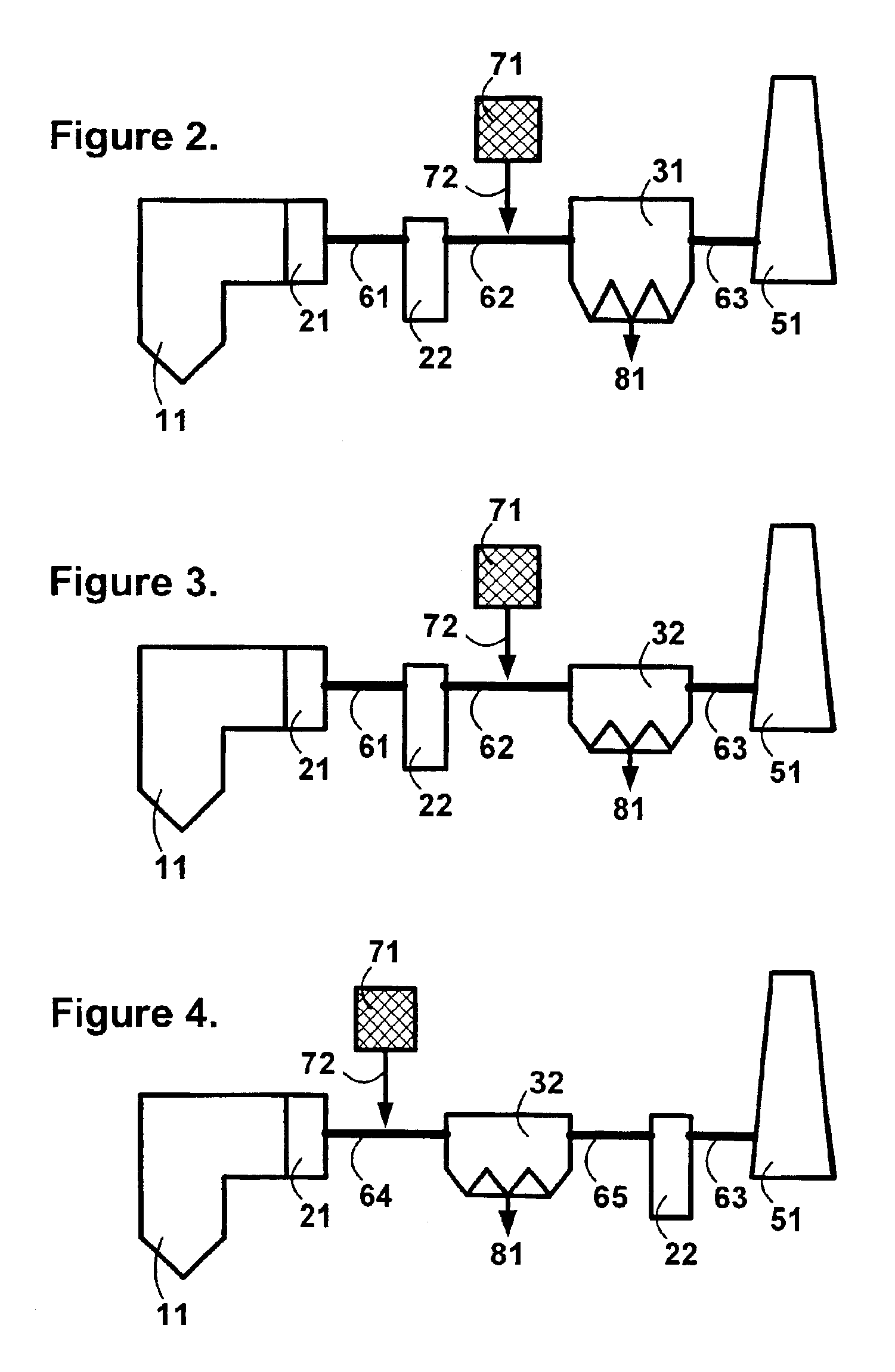Sorbents and methods for the removal of mercury from combustion gases
a technology of combustion gas and sorbents, which is applied in the direction of colloidal chemistry, other chemical processes, separation processes, etc., can solve the problems of ineffective and inappropriate capture and isolating of mercury, and the difficulty of capturing and isolating mercury, etc., to reduce the amount of bromine, increase the ability of mercury sequestration, and reduce the effect of bromin
- Summary
- Abstract
- Description
- Claims
- Application Information
AI Technical Summary
Benefits of technology
Problems solved by technology
Method used
Image
Examples
example 1
[0069]The gas-phase bromine treatment of this invention has been tested on many different commercially-available powdered activated carbons (PACs). Each has been found to be easily brominated to at least 15 wt % Br, including PACs from Barnebey Sutcliffe, Calgon (WPL, Fluepac A, and Centaur®), General Carbon, Nichem, Action Carbon, Advance Recovery Technologies, and Norit. Norit's Darco FGD® is a common PAC frequently used by other researchers as a comparative yardstick.
[0070]The bromine-gas treatment of this invention was found to markedly increase the mercury removal-capacity of every PAC tested. FIGS. 7, 8, and 9, exhibit the fixed-bed mercury breakthrough-curves of three commercial PACs, comparing the elemental mercury capacities of both the untreated and bromine-treated materials. Laboratory fixed-bed capacity tests roughly simulate the conditions of a sorbent in a filter cake on a bag in a fabric filter. While they do not simulate the kinetics and mass transfer of duct-injecti...
example 2
[0076]A series of fixed-bed mercury-capacity evaluations were performed examining the relative performance of a typical powdered activated carbon, Norit Darco FGD®, adsorbed or reacted with different halogen species. The procedures of Example 1 were repeated, except that smaller samples were used and a mercury challenge-gas concentration was about 13 μg / Nm3, typical for flue gases of coal-fired power plants. The resulting breakthrough curves are plotted in FIG. 11.
[0077]The sample that had been exposed to gaseous chlorine, Cl2(g), exhibited some improvement in mercury removal performance relative to the plain, untreated PAC. Two samples of HCl-treated PACs showed even higher ultimate mercury capacities, but poorer kinetics. One of these samples had been pretreated by flowing gas-phase HCl through the PAC sample until it no longer added mass. The other, acquired from Ghorishi et al., was produced by a dilute liquid-phase HCl treatment described in their publications. The elemental me...
example 3
[0078]Examples of sorbents of this invention have also been evaluated in other laboratory-scale fixed-bed test systems by others for elemental and oxidized (HgCl2) mercury capacity. Test systems for each species, very similar to the one used in Examples 1, 2, and 3, have been described in detail in Carey et al., “Factors Affecting Mercury Control in Utility Flue Gas Using Activated Carbon”, J. Air & Waste Mange. Assoc., 48, 1166-1174, 1998. Major differences between the systems, however, concern the loading of the test sorbent and the mercury concentration of the challenge gas. Rather than vacuum-load the test sorbents onto a two-dimensional filter, as in Examples 1 and 2, in the tests of this example the sorbents were mixed 1:10 with inert sand and loaded as a three-dimensional bed. Second, the tests in Example 3 were performed with a mercury concentration of 10 to 15 μg / Nm3, duplicating common power plant parameters, whereas the tests of this example were at concentrations of abou...
PUM
| Property | Measurement | Unit |
|---|---|---|
| temperature | aaaaa | aaaaa |
| temperature | aaaaa | aaaaa |
| temperature | aaaaa | aaaaa |
Abstract
Description
Claims
Application Information
 Login to View More
Login to View More - R&D
- Intellectual Property
- Life Sciences
- Materials
- Tech Scout
- Unparalleled Data Quality
- Higher Quality Content
- 60% Fewer Hallucinations
Browse by: Latest US Patents, China's latest patents, Technical Efficacy Thesaurus, Application Domain, Technology Topic, Popular Technical Reports.
© 2025 PatSnap. All rights reserved.Legal|Privacy policy|Modern Slavery Act Transparency Statement|Sitemap|About US| Contact US: help@patsnap.com



